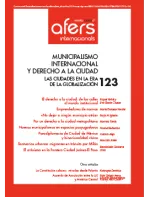Implications for Central America of the Partnership Agreement with the European Union

Trade agreements have proliferated between countries and regional groups with unequal levels of development and highly asymmetrical trade and productive specialisations in recent decades. Successive US governments promoted the first of these through the signing of free trade agreements (FTAs) with economies in their area of influence in Latin America. Though different in some aspects, the European Union's (EU) partnership agreements (PAs) essentially follow the same line of promoting trade liberalisation as the FTAs. This paper discusses the main features and implications of the partnership agreement signed in 2012 between the EU and Central America, highlighting the strengthening of its peripheral, vulnerable international insertion model.
Authors: Patxi Zabalo Arena; profesor de la Universidad del País Vasco / Euskal Herriko Unibertsitatea (UPV/EHU) y Hegoa (Instituto de Estudios sobre Desarrollo y Cooperación Internacional); Eduardo Bidaurratzaga Aurre; profesor de la Universidad del País Vasco / Euskal Herriko Unibertsitatea (UPV/EHU) y Hegoa (Instituto de Estudios sobre Desarrollo y Cooperación Internacional) Artur Colom Jaén; profesor de la Universitat de València.
Keywords: partnership agreements, interregionalism, free trade, Central America, European Union
DOI: doi.org/10.24241/rcai.2019.123.3.225
>> The full text articles of this issue are available only in Spanish language
How to cite this article: Zabalo Arena, Patxi; Bidaurratzaga Aurre, Eduardo y Colom Jaén, Artur. «Implicaciones para América Central del Acuerdo de Asociación con la Unión Europea». Revista CIDOB d’Afers Internacionals, n.º 123 (diciembre de 2019), p. 225-247. DOI: doi.org/10.24241/rcai.2019.123.3.225